Invasive Plant Control at Tuweep:Grand Canyon National Park Partners with Coconino Rural Environmental Corps 
In March 2009, Grand Canyon National Park’s Division of Science and Resource Management teamed up with the Coconino Rural Environmental Corps (CREC) to eradicate invasive plants in the Tuweep District of the park. 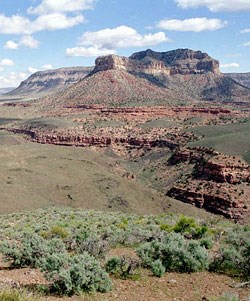
nps photo by michael quinn The vegetative community in the Tuweep area is desert scrub, dominated by big sage, four-winged saltbrush, Mormon tea, prickly pear cactus, and wildflowers such as globemallow. Areas with slightly more shade or moisture may have pinyon pine or Utah juniper.
Because of the negative impacts of invasive plants on park ecosystems, park managers aim to reduce their numbers and distribution. A priority of the park’s invasive plants program is to manage invasive plants in the park’s developed areas.
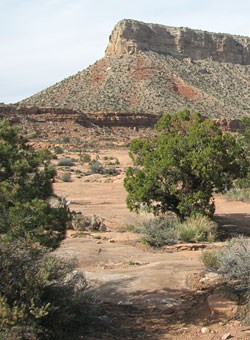
nps photo by allyson mathis Grand Canyon National Park Vegetation Program Manager Lori Makarick said, “Tuweep, although less visited than the North or South Rim developed areas, receives visitation from vehicles from all over the country, and the sight of a vehicle with a plant stuck in the bumper or the wheel well is rather common. 
nps photo by allyson mathis A 2003 survey for invasive plants found small populations of horehound (Marrubium vulgare) and London rocket mustard (Sisymbrium irio). Grand Canyon’s Vegetation Program often partners with volunteers and/or conservation organizations such as CREC on invasive plants control projects. Vegetation biologists provide training and project coordination and work side-by-side with crew members in the field as they complete the invasive control work. 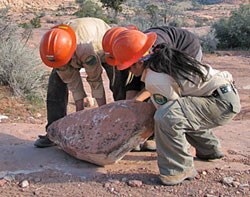
nps photo by allyson mathis CREC CREC was established in 1997 and uses the corps model to address environmental needs following the tradition of the Civilian Conservation Corps.
Crews consist of two leaders and six corps members, and corps members work for three, six, or 12 months. CREC crews work on a variety of conservation-related projects including invasive plant control, trail construction, and forest restoration. Corps members are from all around the country.

nps photo by allyson mathis The Northern Arizona Conservation Corps is a career development program. Many corpsmembers join the program during or after college and/or are interested in pursuing a career in conservation. The Tuweep CREC crew consisted of corpsmembers Rachel Frantz, Greg Hofstetter, Nicholas Hope, Ryan Miller, and Radwanski under the leadership of Crew Supervisor Kip Valesano and Assistant Crew Leader Melvyn Manapsal. 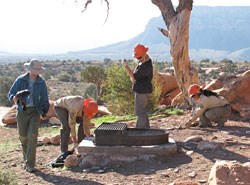
nps photo by allyson mathis Accomplishments at Tuweep During their eight day project at Tuweep with Grand Canyon National Park Invasive Plant Biologist Sara Koenig, the CREC crew controlled two major infestations of invasive plants and assisted the Tuweep District Ranger Todd Seliga on area maintenance projects including repairing the boundary fence and rehabilitating the campground. 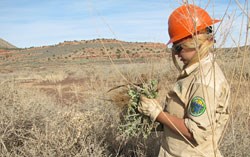
nps photo by allyson mathis The Vegetation Program plans to continue invasive plant control in the Tuweep area in the future, both following up on this year’s work and long-term work to reduce invasive plants throughout the district.
Providing educational opportunities are a part of the CREC program, and the corpsmembers learned about the NPS mission, the park’s Vegetation Program and geology, and had a field trip to a rock art site just outside the park to learn more about the area’s prehistory. For more information on the Coconino Rural Environmental Corps see http://www.crecweb.org For more information about Tuweep see https://www.nps.gov/grca/planyourvisit/tuweep.htm |
Last updated: April 30, 2023
